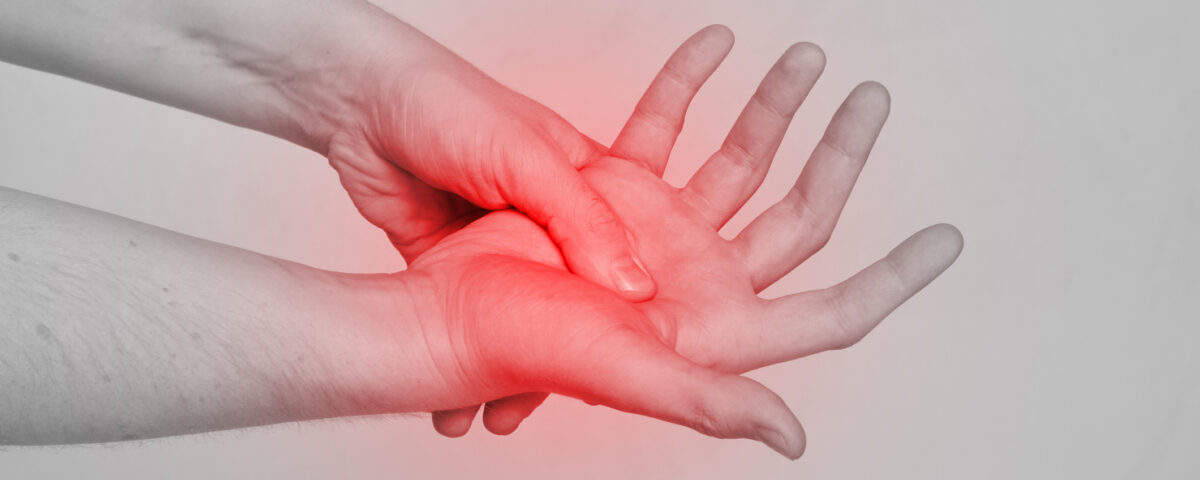
Understanding Boxer’s Knuckle: Causes, Symptoms, and Treatment Options
August 28, 2024
Hand Rejuvenation Options: A Comprehensive Guide to Aging Hands & Treatments
September 23, 2024Introduction
Finger Flexor Tendon Rupture is a significant hand injury that can drastically impact finger movement and overall hand function. These tendons are essential for facilitating the bending and gripping motions of the fingers, making their integrity crucial for everyday tasks.
Key points include:
- Nature of Injury: A rupture occurs when the flexor tendons in the palm and fingers experience excessive stress, leading to their tearing or detachment.
- Symptoms: Common symptoms include finger pain, reduced motion, stiffness, inability to bend joints, swelling, and bruising.
Early diagnosis and appropriate treatment are critical for optimal recovery. Prompt medical attention can prevent complications and improve outcomes.
Understanding the anatomy of these tendons will provide further insights into the severity and management of this injury.
Understanding the Anatomy of Finger Flexor Tendons
Flexor tendons play a crucial role in facilitating finger flexion movements, allowing fingers to bend and grasp objects. These tendons connect muscles in the forearm to the bones in the fingers, transmitting the force necessary for finger movement.
Key Flexor Tendons in the Hand
1. Flexor Digitorum Sublimis (FDS)
- Role: Primarily responsible for flexing the middle phalanges of the fingers.
- Location: Runs from the forearm through the carpal tunnel and attaches to the middle phalanges of each finger.
2. Flexor Digitorum Profundus (FDP)
- Role: Facilitates flexion of the distal phalanges, enabling full closure of the fingers.
- Location: Originates in the forearm, passes through the carpal tunnel underneath the FDS, and attaches to the distal phalanges.
Understanding these tendons’ specific functions and anatomy is essential for diagnosing and treating injuries such as tendon ruptures effectively. Proper identification of whether an injury affects the FDS or FDP can guide appropriate treatment strategies, ensuring better recovery outcomes.
For those interested in related conditions affecting tendons, such as Rheumatoid Arthritis, it is important to understand that these conditions may have an impact on tendon health. Additionally, ECU Tendonitis is another condition involving tendon inflammation that warrants attention.
To seek advice from a specialist regarding such conditions or any hand-related concerns, you can consult with experts like Lillie Albadin, a dedicated member of the Orlando Hand Surgery Specialists team. Her qualifications and approach to hand and upper extremity care can provide valuable insights for your specific situation.
Recognizing Symptoms and Diagnosing Finger Flexor Tendon Rupture
Symptoms of a finger flexor tendon rupture can vary, but common indicators include:
- Finger Pain: Persistent or acute pain in the finger, especially when attempting to move or bend it.
- Reduced Motion: Difficulty or inability to bend the finger joints, indicating a possible disruption in tendon continuity.
- Swelling and Bruising: Visible swelling and discoloration around the affected area due to internal bleeding and inflammation.
- Stiffness: A feeling of stiffness in the finger, often making movements uncomfortable or restricted.
Diagnostic Process
Physical Examination
A thorough physical examination is essential for diagnosing a tendon rupture. The hand specialist will:
- Assess the range of motion and strength of the affected finger.
- Check for tenderness along the tendon pathway.
- Perform specific tests like the FDS (Flexor Digitorum Superficialis) test and FDP (Flexor Digitorum Profundus) test to evaluate tendon functionality.
Imaging Techniques
To confirm the diagnosis and assess the extent of the injury, several imaging techniques may be utilized:
- X-rays: Useful primarily to rule out fractures or bone injuries that may accompany tendon damage.
- MRI (Magnetic Resonance Imaging): Provides detailed images of soft tissues, including tendons, to evaluate the rupture’s severity and any retraction of tendon ends.
Early diagnosis is crucial for effective treatment. By recognizing these symptoms and undergoing a comprehensive diagnostic process, individuals can ensure timely intervention and better recovery outcomes.
Causes, Risk Factors, and Prevalence of Finger Flexor Tendon Rupture
Understanding the causes and risk factors of finger flexor tendon rupture is crucial for prevention and early diagnosis. This knowledge can help individuals make informed decisions about their hand health.
Common Causes:
- Participation in Hand Strength Sports: Activities like rock climbing or weightlifting exert significant stress on the flexor tendons, making them more prone to injury.
- Traumatic Incidents: Specific injuries such as jersey finger, which occurs when a player’s finger gets caught in an opponent’s jersey, are common culprits for tendon rupture.
- Underlying Medical Conditions: Conditions like rheumatoid arthritis can lead to inflammation and weakening of the tendons, making them more susceptible to injury.
- Previous Hand Surgeries: Surgeries involving fractures or other hand conditions can predispose tendons to future ruptures.
Risk Factors:
- Age and Demographics: Older adults with degenerative changes in their tendons face a higher risk of tendon rupture.
- Occupation: Jobs requiring repetitive hand movements or heavy manual labor increase susceptibility to tendon injuries.
- Activity Level: Highly active individuals involved in sports or physical activities face a greater likelihood of tendon injuries due to increased stress on the tendons.
Prevalence:
Research indicates that flexor tendon ruptures are relatively rare but can occur across various populations. For instance:
- Studies show that athletes, particularly those engaged in contact sports, present a higher incidence rate of tendon rupture.
- Individuals with rheumatoid arthritis have a significantly increased risk due to chronic inflammation weakening the tendon structure.
To learn more about related wrist conditions that might affect tendon health, you can visit this Wrist Conditions Overview page.
It’s important to note that recognizing early signs of tendon rupture and seeking prompt medical attention significantly improves recovery outcomes. If you’d like to see some patient success stories and treatment outcomes, you can browse through the gallery of Orlando Hand Surgery Specialists.
Comprehensive Treatment Approaches for Finger Flexor Tendon Rupture
When it comes to managing finger flexor tendon rupture, there are two primary categories to consider:
- Conservative Treatments
- Surgical Interventions
Conservative Treatments
Splinting and Immobilization
- Essential in preventing further injury.
- Helps maintain the finger in a position that promotes natural healing.
Occupational Therapy
- Focuses on exercises tailored to restore finger function.
- Utilizes techniques to minimize stiffness and improve range of motion.
Surgical Treatments
Tendon Reconstruction
- Often necessary when conservative treatments fail or in severe cases.
- Involves reattaching the ruptured tendon to its original site.
Tendon Spacer or Graft
- Used when direct repair isn’t feasible.
- Spacers maintain the gap until a tendon graft can replace the ruptured segment.
Post-Surgical Rehabilitation
Rehabilitation Importance
- Crucial for achieving optimal outcomes.
Specific Exercises and Techniques
- Tailored exercises designed to strengthen the repaired tendon.
- Gradual increase in intensity to prevent re-injury and ensure proper healing.
To further broaden your understanding of related surgical procedures, you may want to explore topics such as Wrist Fracture Surgery or Elbow Joint Dislocation Surgery. These resources provide insights into other conditions that may require surgical intervention, helping you recognize the importance of prompt and appropriate treatment for a variety of hand-related injuries.
Prognosis, Complications, and Recovery Expectations
Prognosis After Different Treatments
- Conservative Management: Patients undergoing non-surgical treatments such as splinting and NSAIDs often experience a gradual return of function. Full recovery may take several months, with consistent occupational therapy being crucial.
- Surgical Intervention: Tendon repair or reconstruction generally offers a more favorable prognosis for restoring full finger flexion. Postoperative rehabilitation plays a significant role in the success rate.
Potential Complications
- Scarring and Adhesions: Tendons may develop scar tissue, leading to limited range of motion. This can be mitigated through physical therapy.
- Infections: Surgical sites are prone to infections which need prompt medical attention.
- Tendon Rupture Recurrence: There is a risk of re-injury, particularly if the tendon hasn’t fully healed or if high-stress activities are resumed too soon.
- Stiffness and Reduced Grip Strength: Long-term stiffness or reduced grip strength might persist, requiring ongoing therapeutic exercises.
Managing Challenges
Setting realistic expectations is essential for both patients and caregivers:
- Occupational Therapy: Engaging with specialized therapists ensures structured rehabilitation plans tailored to individual needs. Orlando Hand Surgery Associates, known for their expertise in upper extremity orthopedics, offers expert guidance.
- Follow-Up Appointments: Regular check-ins with healthcare providers help in monitoring progress and addressing any complications early on.
- Adherence to Protocols: Following established elbow treatment protocols from reputable sources like Orlando Hand Surgery Specialists ensures effective care.
Understanding these aspects aids in navigating the recovery process efficiently while minimizing potential setbacks. Additionally, receiving health counseling services at Orlando Hand Surgery Specialists can provide further guidance and support for overall well-being and hand care needs.
Preventing Injuries: Hand Safety Measures for Active Individuals
It is important for people involved in activities that require hand strength to take steps to prevent injuries. By implementing effective hand safety techniques, the risk of tendon injuries such as finger flexor tendon ruptures can be significantly reduced.
Key Strategies for Preventing Hand Injuries:
1. Proper Equipment Usage
- Utilize gloves and other protective gear appropriate for the sport or activity.
- Ensure that all equipment is in good condition and fits properly to provide adequate support and protection.
2. Hand Safety Techniques
- Learn and practice proper hand positioning and movement techniques to avoid undue stress on the tendons.
- Incorporate warm-up exercises focusing on the hands and fingers before engaging in strenuous activities.
3. Gradual Training
- Gradually increase the intensity and duration of training sessions to allow the tendons and muscles time to adapt.
- Avoid sudden increases in activity levels which can lead to overuse injuries.
Additional Considerations:
- Regularly perform exercises designed to strengthen the flexor tendons and surrounding muscles.
- Include flexibility exercises to maintain a full range of motion in the fingers and wrists.
- Incorporate rest days into training schedules to allow for adequate recovery.
- Pay attention to early signs of fatigue or discomfort and adjust activities accordingly.
To ensure comprehensive care for hand conditions, it’s advisable to consult Orlando Hand Surgery Specialists. They have a team of experts specializing in various hand specialties who provide exceptional care. Furthermore, they also offer expert elbow services, making them a one-stop destination for complete hand and upper extremity care.
Adhering to these injury prevention strategies can help maintain optimal hand health, supporting long-term participation in sports and activities without compromising tendon integrity.
The Connection Between Occupational Therapy and Hand Injury Rehabilitation
Occupational therapy is crucial for helping people recover from hand injuries like flexor tendon ruptures. Occupational therapists use specialized treatments and take a holistic approach to functional rehabilitation, addressing both the physical and emotional aspects of recovery.
How Occupational Therapists Help
Occupational therapists are key in:
- Creating Personalized Treatment Plans: Designing exercises and activities specifically for each patient to promote the best possible recovery.
- Providing Hands-on Therapy: Using techniques like manual therapy, splinting, and custom orthotics to speed up healing and bring back function.
- Educating Patients: Giving advice on how to use their hands correctly, safety precautions, and ways to prevent future injuries.
A Whole-Person Approach to Healing
A whole-person approach ensures thorough care by focusing on:
- Practical Activities: Incorporating everyday tasks into therapy sessions to improve the real-life use of skills learned during rehabilitation.
- Emotional Support: Addressing the feelings that come with hand injuries through counseling and stress management techniques.
- Long-term Recovery Management: Helping patients set achievable goals and offering ongoing support for lasting improvement.
Orlando Hand Surgery Associates offers helpful information on different patient conditions related to hand injuries. This resource can assist individuals in gaining a better understanding of their condition, whether it’s due to a sports injury, an accident, or normal aging.
Successful rehabilitation often involves multiple therapies. A motivating example is seen in this Patient Success Story: Platelet Rich Plasma Therapy for Hand Pain, demonstrating how options like platelet-rich plasma therapy can work together with occupational therapy for better results.
Occupational therapists play a crucial role in guiding patients through their recovery process, making sure they regain as much function as possible while still enjoying a good quality of life.
Conclusion
Prompt medical attention is crucial if you suspect a finger flexor tendon rupture. Early intervention and comprehensive hand therapy can significantly enhance recovery outcomes.
Call-to-Action:
- Consult a Hand Specialist: For effective management of finger injuries, consider consulting with a hand specialist. Specialists can provide accurate diagnoses and recommend appropriate treatment plans.
- Hire Professional Services: Professional services ensure prompt and effective treatment for hand injuries. Engaging with experts can lead to better rehabilitation results.
For those involved in hand strength sports, prioritizing safety and proper techniques can reduce the risk of tendon injuries. If you’re experiencing symptoms or need specialized care, you may want to request an appointment with Orlando Hand Surgery Specialists. They have a team ready to provide expert care for your hand and upper extremity needs. Additionally, their FAQs page provides valuable information on common concerns that you may find helpful.
Effective recovery often involves occupational therapy, which plays a pivotal role in functional rehabilitation after a finger flexor tendon rupture. Seeking professional advice can make a significant difference in your healing journey.
FAQs (Frequently Asked Questions)
What is finger flexor tendon rupture?
Finger flexor tendon rupture is a hand injury that can significantly impact finger movement and function. It occurs when the tendons responsible for flexing the fingers are torn or damaged, leading to reduced motion and discomfort.
Why is early diagnosis and appropriate treatment important for finger flexor tendon rupture?
Early diagnosis and appropriate treatment are crucial for better recovery outcomes. Timely intervention can help prevent long-term complications and improve the chances of restoring normal finger function.
What are the specific characteristics and locations of the FDS and FDP tendons in the hand?
The flexor digitorum sublimis (FDS) and flexor digitorum profundus (FDP) tendons play essential roles in facilitating finger flexion movements. The FDS tendon runs on the surface of the hand, while the FDP tendon is located deeper within the hand structure.
What are some common symptoms of finger flexor tendon rupture?
Common symptoms of finger flexor tendon rupture include finger pain, reduced motion, swelling, and bruising. These indicators may suggest a potential tendon rupture and should prompt further evaluation by a healthcare professional.
What are some causes and risk factors for finger flexor tendon rupture?
Causes and risk factors for finger flexor tendon rupture include participation in hand strength sports, specific traumatic incidents like jersey finger, underlying conditions such as rheumatoid arthritis, and previous hand surgeries. The prevalence of these injuries may vary across different populations or age groups.
What are the main categories of treatment options for finger flexor tendon rupture?
The two main categories of treatment options for finger flexor tendon rupture are conservative management (including splinting and occupational therapy) and surgical intervention (involving procedures like tendon reconstruction with spacers or grafts). Rehabilitation following either type of treatment is essential for optimal recovery.


